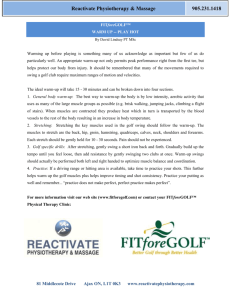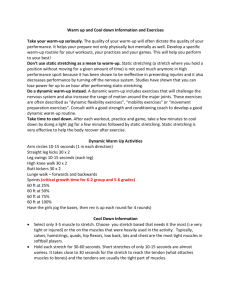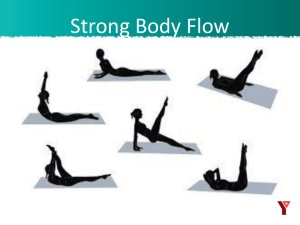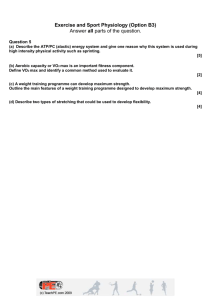Warm * Up / Cool Down
advertisement
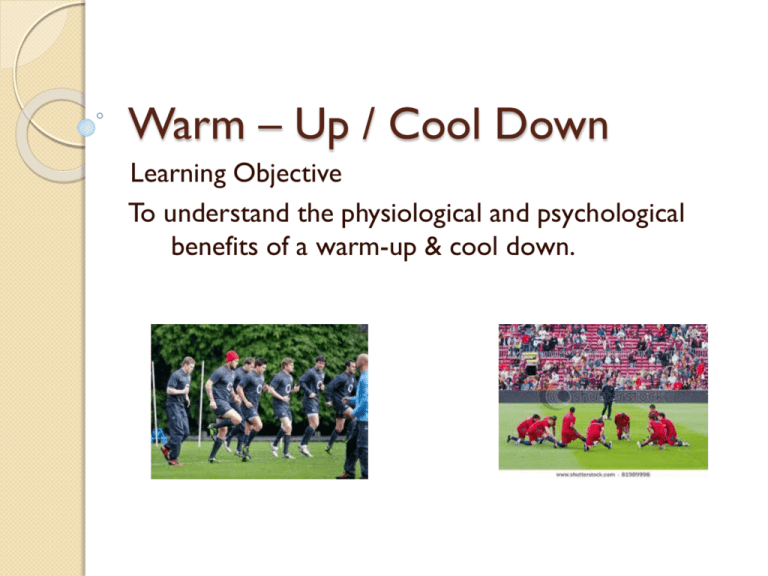
Warm – Up / Cool Down Learning Objective To understand the physiological and psychological benefits of a warm-up & cool down. Effective warm-up should include: General warm-up (pulse raiser) Stretching Specific warm up (practice of skills involved) Psychological preparation (focusing, anxiety control) Benefits of warm-up: Physiological Benefits: Better oxygen delivery to muscle tissues Improved muscle blood flow Increased speed of nerve conduction Reduction in likelihood of muscular injury Increased heart rate. Psychological Benefits Control anxiety. Focus mind. Practice skills involved. Stretching Safely Important points to consider when stretching during a warm-up: Warm-up / pulse raiser prior to stretching, Make stretches sports specific, (begin) slowly, Stretches held for too long or not long enough could cause injury, Never hold a stretch which causes pain, No bouncing / ballistic movements, Balance / equalise stretches of the agonist and antagonist muscles. Stretching Must occur after the general warm-up. Must be specific to the activity. Stretching improves flexibility, increases relaxation of muscles and improves muscles ability to withstand the forces involved in exercise. Stretching can be either static (no movement) or dynamic (with movement). There are 4 types of stretching you need to know about: Types of Stretching Active stretching – holding a stretched position by contraction of your own agonist muscles. Increases active flexibility and strengthens agonist muscles. Difficult to hold for over 10s. Yoga based active stretching Passive stretching – a stretch position being held by something other than the agonist muscles. Good for cooling down and reducing post-exercise muscle soreness. Static stretching – stretch to the limit and then isometrically contract stretched muscles. Much more effective than the previous two for strength and flexibility. E.g. partner holds leg high while you try to push down or ‘push the wall’ calf stretch. PNF stretching Ballistic stretching – using movement to ‘bounce’ in and out of a stretched position. Can cause injury. Considered dangerous. Doesn’t allow muscles to adjust to stretched position. Can cause muscles to tighten due to ‘stretch reflex.’ Ballistic hamstring tear Benefits of improved flexibility Definition: the range of movement around a joint. Increased range of movement, Decreased chance of injury, Ability to hold aesthetically pleasing gymnastic positions, Greater reach (e.g. tennis, basketball) Can apply more power / longer levers in athletic activities. Benefits of a Cool-Down Aids removal of waste products (lactic acid). Reduce potential for delayed onset of muscle soreness (DOMS). Reduce chances of dizziness or fainting caused by pooling of blood at extremities. Reduce level of adrenaline in blood. Allow HR to gradually return to normal rate. Should include 5-10mins walk/jog and 510mins static stretching.


